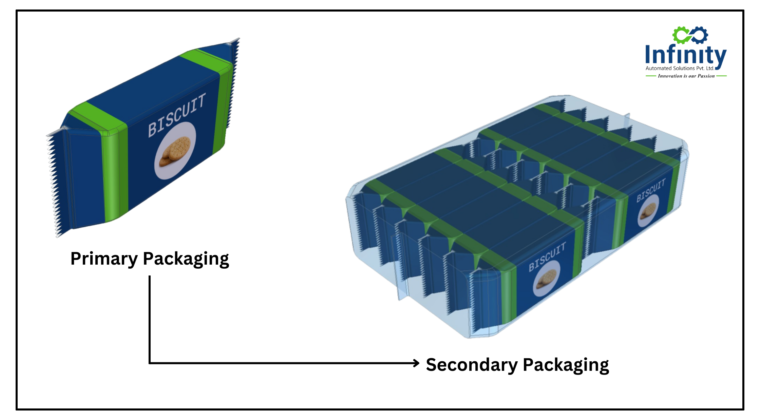Secondary packaging of biscuits refers to the packaging materials used to protect and contain multiple individual biscuit packets or units. It serves to provide additional protection during transportation, storage, and display, as well as to facilitate easy handling and branding.
Secondary packaging of biscuits serves several important purposes:
1. Protection: The primary function of secondary packaging is to provide an additional layer of protection to the biscuits. It helps safeguard the biscuits from external factors such as moisture, air, light, and physical damage during transportation, storage, and handling. This helps maintain the quality, freshness, and integrity of the biscuits until they reach the consumer.
2. Convenience: Secondary packaging enhances the convenience of handling and using biscuits. It can include features like easy-to-open seals, resealable closures, individual portion packs, or multipacks, which make it easier for consumers to store, carry, and consume the biscuits.
3. Branding and Marketing: Secondary packaging plays a crucial role in branding and marketing. It provides a surface to display brand logos, product information, nutritional details, promotional offers, and attractive designs that help grab the attention of consumers. Eye-catching packaging can differentiate a brand from its competitors and influence consumer purchasing decisions.
4. Shelf Display: Secondary packaging is designed to improve the shelf display of biscuits in retail stores. It may include features like hanging hooks, stand-up displays, or attractive box designs that make the product visually appealing and easily accessible to consumers. Effective shelf display can increase product visibility and attract potential buyers.
5. Regulatory Compliance: Packaging plays a vital role in complying with regulatory requirements. It provides a platform to include necessary labeling information, such as ingredients, nutritional values, allergen warnings, manufacturing and expiry dates, and other legal and safety information as per the regulations of the target market.
Watch Video: Secondary Packaging of Biscuits
Common types of secondary packaging used for biscuits include:
1. Cartons: Cardboard cartons are commonly used for secondary packaging. They can hold multiple biscuit packets, offering protection and convenience during transportation and storage.
2. Shrink Wrap: Biscuit packets may be grouped together and covered with shrink wrap, which is a plastic film that tightly wraps around the packets, providing protection and keeping them securely in place.
3. Display Boxes: These are specially designed boxes with attractive graphics and branding elements, intended for retail displays. They allow for easy showcasing of biscuits on store shelves and often feature windows to provide visibility of the product.
4. Multipacks: Multipacks are secondary packaging that combine several individual biscuit packets into a larger pack, such as a bundle or a bag. This type of packaging is convenient for purchasing in bulk or for sharing.
5. Sleeves or Sleevers: Sleeves are paper or cardboard wraps that enclose individual biscuit packets. They can be easily removed for access to the biscuits and may feature branding and product information.
The choice of secondary packaging depends on factors such as the type of biscuits, distribution channels, target market, and branding objectives. Manufacturers often strive to strike a balance between protection, convenience, and visual appeal to enhance the overall biscuit packaging experience.


